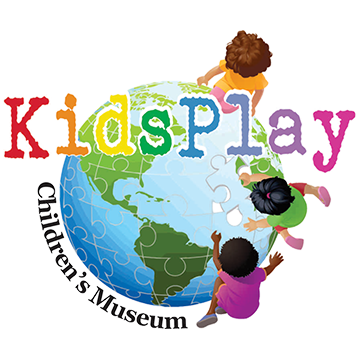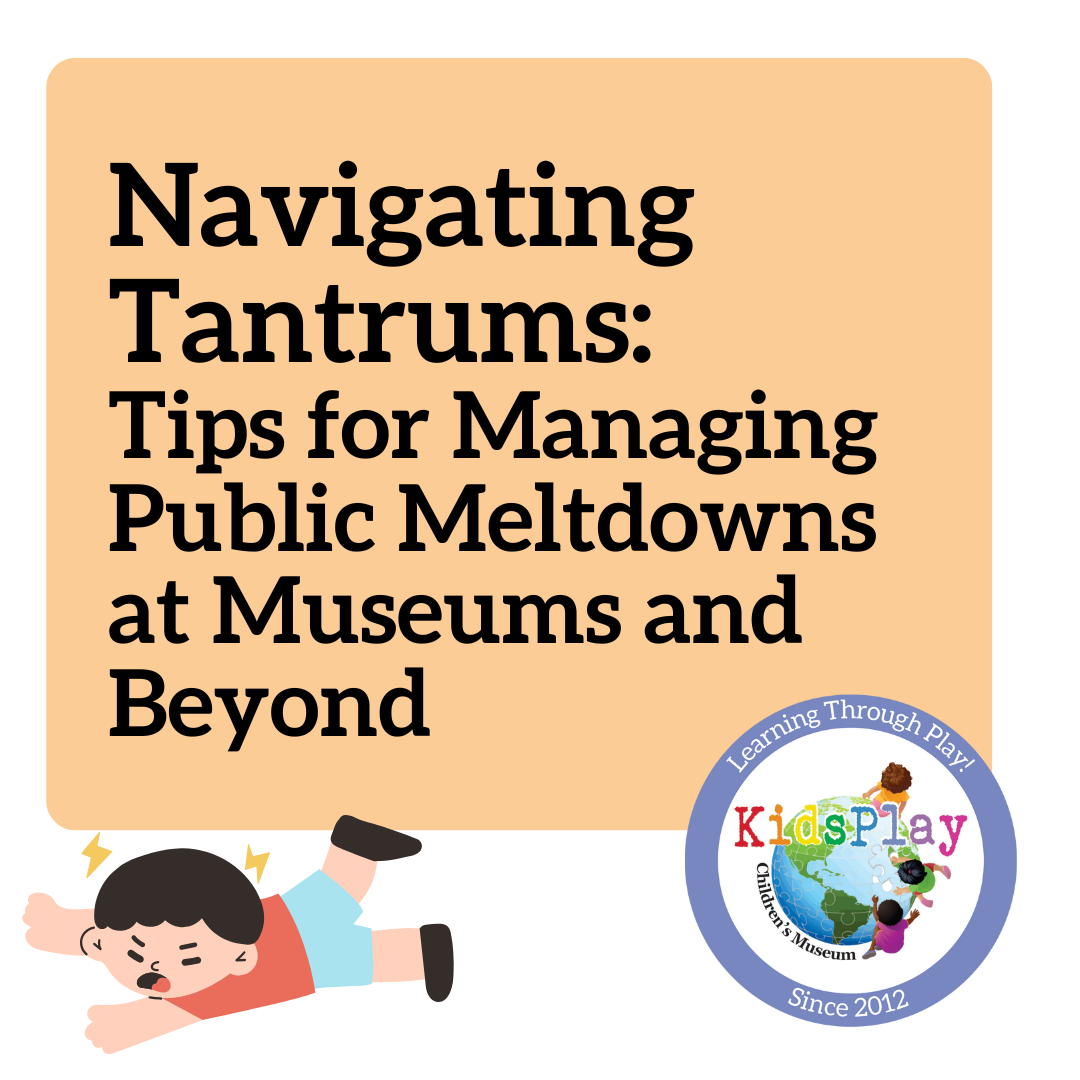Navigating Tantrums: Tips for Managing Public Meltdowns at Museums and Beyond
KidsPlay’s staff are no strangers to temper tantrums. Tantrums are a normal part of a child’s growth and can happen in response to both everyday and special transitions (like leaving KidsPlay or changing from one activity to another). That doesn’t necessarily make them any easier to deal with as a caregiver, though.
Tantrums in public can be overwhelming and embarrassing for both caregivers and children. Understanding the cause behind them can make a huge difference.
Tantrums are often triggered by frustration or sensory overload. Unable to express emotions in a more mature way, the child’s feelings are amplified and lead to a “meltdown:” acting out as a means of communication.
Here are some tips for handling tantrums in public:
- Stay calm and assess the situation: Try to determine what triggered the tantrum. Is your child hungry, tired, or overwhelmed? Addressing these needs can sometimes help defuse the situation.
- Don’t give in: While it’s tempting to give your child what they want to end the tantrum quickly, this reinforces the behavior. Stay firm and consistent with your expectations.
- Ignore negative behavior and praise positive actions: Give attention to the behaviors you want to encourage, like calming down or compromising. Try not to focus on the outburst itself.
- Try using scripts. It may be helpful to provide your child with a “script” and steps to help your child anticipate the transition and rehearse his appropriate response. For example, when leaving KidsPlay or some other activity your child has difficulty transitioning off of, you could say,
- “Let’s choose one more favorite thing to do. After that we will say ‘goodbye’ and go on a car ride (or walk) back to our toys, pet, family, etc.”
- “We will wave and say, ‘Thank you.’ Then we will come back again soon.”
- Prepare and anticipate triggers: If certain activities—like shopping or waiting in line—often lead to meltdowns, try to plan ahead. Bring distractions, keep outings short, and give your child warnings about what’s coming next. Distractions can be as simple as “I spy with my little eye” or “let’s listen for and point to the nearest sound.” Take time to take breaks ahead of time, too. A short rest, snack, or story time may save time when transitions are coming later.
- Take breaks when needed: If you’re in a public place and the tantrum is escalating, find a quieter spot to let your child calm down. Sometimes a change of environment can make a big difference.
Take care of yourself, too!
When your child has a tantrum, you may feel as though the whole world is watching. Don’t be afraid to take the breaks and steps you need to take to help your child. Most often, those watching eyes, if there are any, may be remembering, admiring and sympathizing.
Remember: tantrums are a normal thing that every caregiver deals with, and you are not alone. As your child learns to speak and communicate better, tantrums are likely to become less frequent and less intense. Until then, find a quiet spot, distract your child, be consistent, follow through with your plans, and remember that a change of environment can make a big difference. Handling public tantrums with patience and consistency will help your child learn better ways to cope, leading to fewer meltdowns over time.


